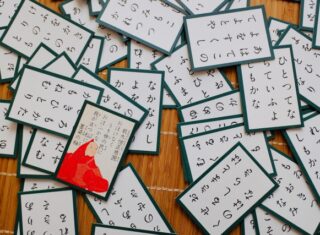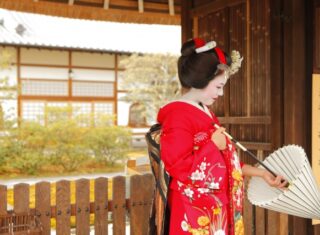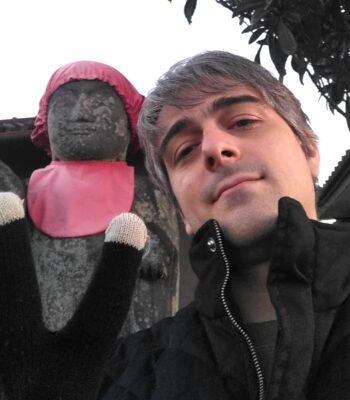- Learning Japanese
- From Zero to Fluent in Japanese
What Is Omotenashi? A Deep Dive Into Japanese Hospitality Culture That Continues to Move Visitors From Around the World
2025.07.21
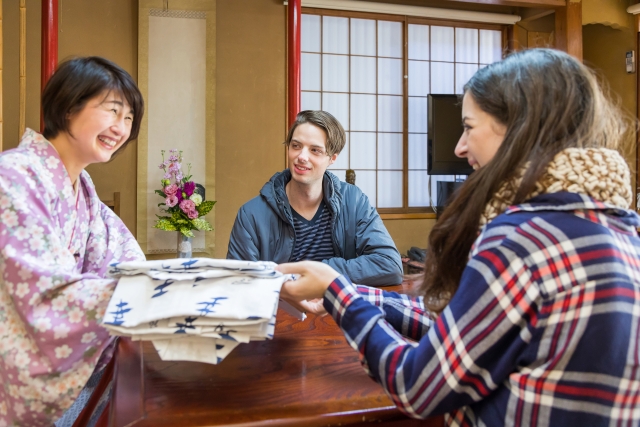
For many people interested in Japan, the word omotenashi may sound beautiful—but leave them wondering, "What exactly does it mean?"
You might also be curious how omotenashi differs from concepts like “service” or “hospitality,” or what it actually looks like in practice across Japan.
In this article, we’ll explore what omotenashi means in Japanese culture, how it’s different from general service or hospitality, and showcase real-life examples of omotenashi that have left a lasting impression on foreign visitors.
We’ll also cover the historical roots of omotenashi, along with four key attitudes that lie at the heart of this unique cultural value.
What Does Omotenashi Mean?

Omotenashi is a Japanese word that refers to wholehearted hospitality, offered without expecting anything in return. In Japanese culture, omotenashi refers to acts and expressions of thoughtful care, rooted in the following ideas:
- Providing attentiveness and consideration to others without expecting compensation
- Welcoming guests with a genuine, sincere heart, free of pretense or hidden motives
The word motenasu (もてなす), from which omotenashi is derived, originally meant “to achieve something by using one’s resources.” In other words, it implies thoughtfully using one’s heart or possessions to bring satisfaction to others.
Additionally, the term omotenashi is said to originate from the phrase omote nashi (表なし), which literally means “no front (no façade).” This reflects the idea of welcoming others with a heart that has no hidden side—completely open and sincere.
Rather than simply providing good service, omotenashi is about anticipating the needs of others, being considerate, and offering kindness and care from the heart—all done naturally and without fanfare.
Unlike customer service in many Western countries, where a clear line exists between the service provider and the customer, omotenashi is rooted in the spirit of humility, thoughtfulness, sincerity, and a desire to make others feel truly welcome.
This concept plays a central role in many aspects of Japanese culture, from traditional tea ceremonies to modern hotels, restaurants, and everyday interactions.
The Difference Between Omotenashi, Service, and Hospitality

Omotenashi is often compared to “service” or “hospitality,” but it actually has distinct characteristics that set it apart. Below is a comparison of these three concepts:
|
Omotenashi |
Service |
Hospitality |
|
|
Meaning |
Welcoming guests with a sincere heart, free of pretense, to bring satisfaction |
Attending to customers with a focus on their needs |
Thoughtful care shown to others |
|
Relationship |
Equal (no expectation of compensation) |
Hierarchical (compensation is involved) |
Equal (no expectation of compensation) |
|
Purpose |
To move the heart of the recipient |
To receive monetary reward |
To help the other person feel comfortable |
|
Nature |
Care that considers “this moment, this place, and this person” even in their absence |
Provided to “anyone, anywhere, at any time” |
Care given to “this person, in this moment, in this place” |
Service is customer-oriented and performed with the goal of receiving monetary compensation.
In contrast, both omotenashi and hospitality are offered voluntarily, without seeking anything in return.
However, the key difference is that omotenashi is about “thinking of the other person at all times,” while hospitality is about “making the other person feel comfortable.”
The History of Omotenashi in Japan
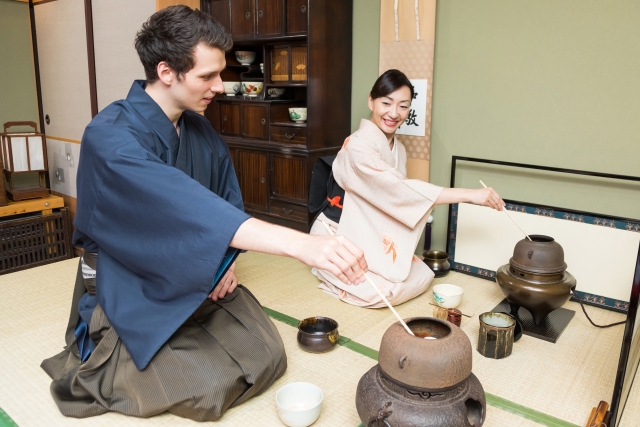
Japan’s culture of omotenashi has existed since ancient times. The word motenasu already appears in The Tale of Genji, which was compiled around the year 1000.
The spirit of omotenashi became more widely embraced in Japan from the Heian to Muromachi periods, particularly through the cultural influence of the tea ceremony, which places great importance on showing thoughtfulness toward one’s guests.
Sen no Rikyū, the tea master who played a key role in shaping the Japanese tea ceremony, also emphasized the importance of omotenashi. He left behind the “Seven Rules of Rikyū”, which outline the essential mindset for hosting others with care and respect.
The Four Essential Qualities of Omotenashi

There are four key qualities that lie at the heart of omotenashi:
- Thoughtfulness that exceeds expectations
- A spirit of giving without expecting anything in return
- Flexible attentiveness that gently adapts to the other person’s needs
- Inner calm and composure in oneself
Let’s take a closer look at each of these essential traits that define the spirit of omotenashi.
Thoughtfulness that exceeds expectations
In omotenashi, going beyond the other person’s expectations is key.
Simply meeting expectations may not leave a lasting impression—but offering care that exceeds what they imagined can truly move someone’s heart.
Of course, exceeding expectations isn’t easy. It requires constantly thinking deeply about the other person’s feelings—“What worries might they have?” “What are they truly hoping for?”—and staying attuned to their unspoken needs.
A spirit of giving without expecting anything in return
Another important quality of omotenashi is the mindset of not seeking anything in return.
Unlike services that are provided in exchange for compensation, omotenashi is defined by the desire to emotionally move others—without aiming for financial reward.
If one acts with an expectation of getting something back, and that return doesn’t come, feelings of dissatisfaction can show through—making it impossible to offer true omotenashi.
Flexible attentiveness that gently adapts to the other person’s needs
Empathetic, flexible attentiveness is also a core part of omotenashi.
Each person has different needs, and those needs can change depending on the moment. To offer care that touches someone’s heart, it’s important to adjust your approach to fit the time, place, and person.
For example, simply sticking to the manual in every situation, or being overly talkative with someone who just wants quiet, cannot be called true omotenashi.
Inner calm and composure in oneself
Having space in your own heart is essential to practicing omotenashi.
If your own mind is overwhelmed, it becomes difficult to notice or care for others—and offering genuine omotenashi becomes nearly impossible.
Because omotenashi requires you to calmly observe others and think carefully about what they truly want, it’s important to build experience, take care of your own mental and physical well-being, and maintain a healthy balance within yourself.
★Also try reading:
Deepen Your Understanding of Japanese Culture and Traditions! A Detailed Guide to 12 Iconic Traditions
Real Examples of Omotenashi That Moved Foreign Visitors to Japan
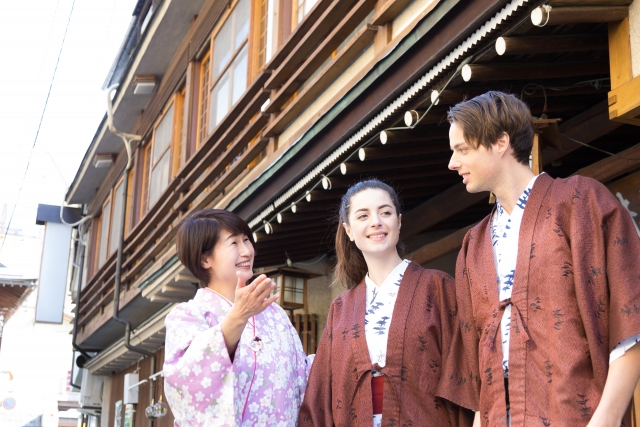
Here are some real-life examples of omotenashi that left a strong impression on visitors from abroad:
- Trains and buses that run precisely on time
- A staff member showing concern for an injury after a customer broke a plate
- Gift wrapping done with heartfelt care, simply to bring joy
- Personalized service and attentiveness at hotels
- The deep consideration shown to guests during a traditional tea ceremony
In the following section, we’ll take a closer look at each of these five examples to understand how omotenashi is expressed in everyday life in Japan.
Trains and Buses That Run Precisely on Time
Many foreign visitors to Japan are surprised by just how punctual the trains and buses are.
In Japan, this remarkable punctuality is made possible through careful planning and considerate effort, such as:
- Meticulously calculated operation schedules
- Train controllers monitoring and adjusting train positions and speeds in real-time
- Quick responses to restore the schedule even after delays
Thanks to the staff’s omotenashi-driven dedication, trains operate on time, and even a short delay of just a few minutes is followed by a polite public announcement offering a sincere apology.
There was even a case that gained attention overseas where a train company issued a public apology simply for departing slightly earlier than scheduled—showcasing the extraordinary level of care given to passengers.
Concern for Injury After Breaking a Plate
Another moving example of omotenashi is when a visitor accidentally broke a plate at a Japanese restaurant—and instead of being scolded, the staff showed genuine concern for the customer’s safety.
When something goes wrong in a foreign country, it’s easy to feel anxious. But in this case, the restaurant staff responded with warm smiles and reassured the guest, doing everything they could to ensure they felt at ease.
Gift Wrapping That Expresses a Wish to Bring Joy
In Japanese omotenashi culture, gift wrapping is often done with the heartfelt intention of “wanting to make the recipient happy.”
The Japanese word tsutsumu (to wrap) doesn’t just imply practicality for carrying something—it also carries the deeper meaning of “giving something to someone special” or “protecting something with care.”
This spirit can be seen in small but thoughtful gestures, such as offering a choice of decorative wrapping styles or removing price tags so that the recipient doesn’t worry about the cost. These details often leave foreign visitors pleasantly surprised.
Personalized Hospitality at Hotels
A hallmark of Japanese hotels is their tailored approach to omotenashi, offering thoughtful hospitality that suits each guest’s individual needs.
For example, if a guest seems unsure about sightseeing plans, the staff might provide brochures, local tips, and transportation schedules. If a guest shows interest in origami, a staff member might even come by to teach them how to fold it.
Hotel staff make a conscious effort to understand each guest’s purpose for staying and how they’re spending their time—so they can offer care and attention perfectly suited to the individual.
Thoughtful Hospitality in the Tea Ceremony
The Japanese tea ceremony is deeply rooted in the spirit of omotenashi, guided by the concept of ichigo ichie—the idea that every encounter is unique and should be cherished.
Here are a few representative examples of the kind of care and attention given to guests during a tea ceremony:
- Incense may be used or light conversation initiated to create a calm, relaxed atmosphere and ease any nervousness.
- The host carefully observes the guest to serve the tea at just the right moment so they can enjoy it without feeling rushed.
- The design on the teacup is turned to face the guest, allowing them to appreciate its beauty before drinking.
These gestures are just a few of the many ways hosts show thoughtfulness during the tea ceremony. If you’ve never experienced it, visiting Japan to participate in a tea ceremony is a wonderful way to encounter omotenashi firsthand.
★Also try reading:
An Introduction to Japanese Tea Ceremony for Western Audiences: Learn Basic Etiquette for Beginners!
Omotenashi Meaning – Conclusion

Omotenashi, a cornerstone of Japanese culture, refers to the spirit of offering sincere hospitality with no expectation of reward—providing heartfelt care and kindness to move and delight others.
If you’ve found yourself drawn to these values and want to deepen your understanding of Japanese language and culture, we highly recommend the online Japanese courses at Oku Sensei's Japanese.
At Oku Sensei’s Japanese, you don’t just learn grammar and conversation skills—you also gain insight into the customs, society, and history that shape the language. This means you’ll develop a practical command of real Japanese, not just textbook phrases.
Even complete beginners can feel at ease thanks to the personalized support system that adapts to each student’s needs.
We’re currently offering a free 30-minute consultation, so be sure to check it out!




